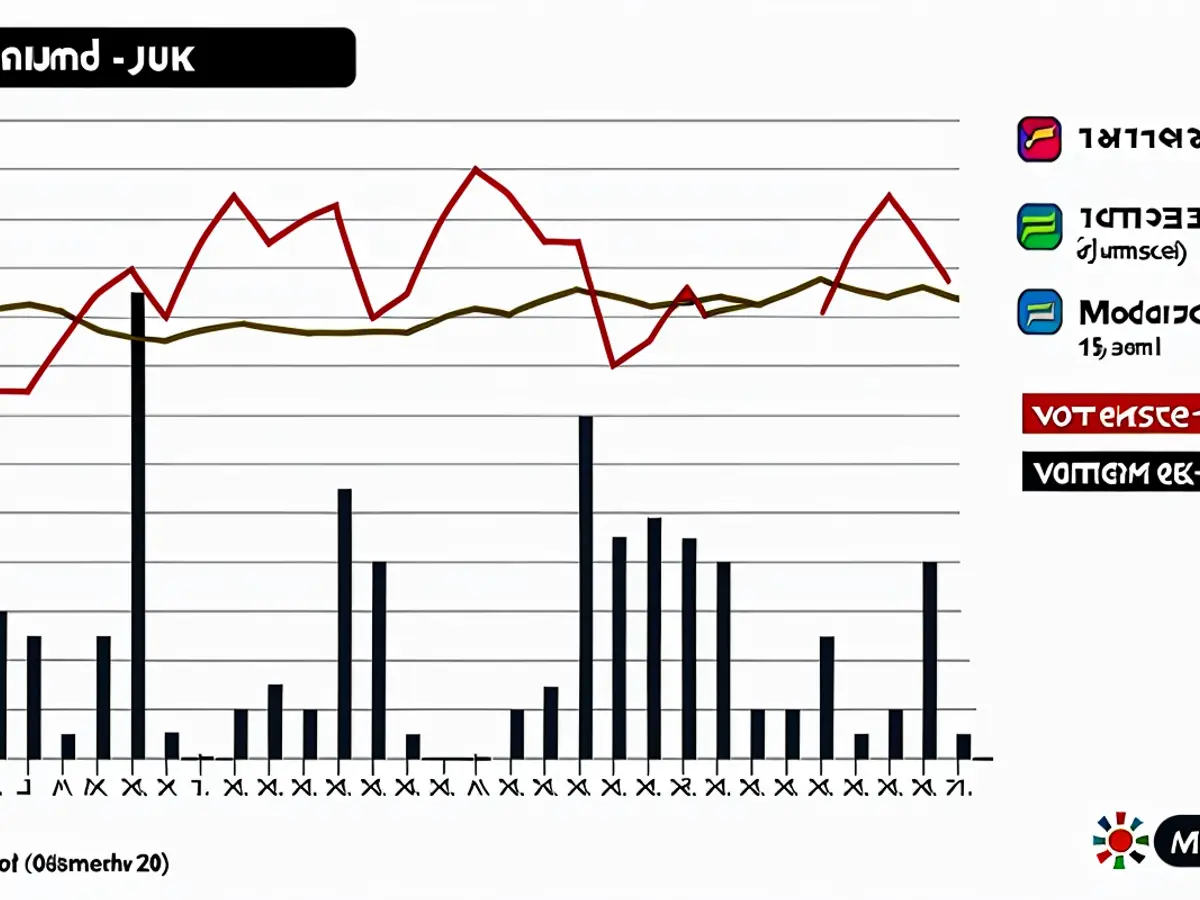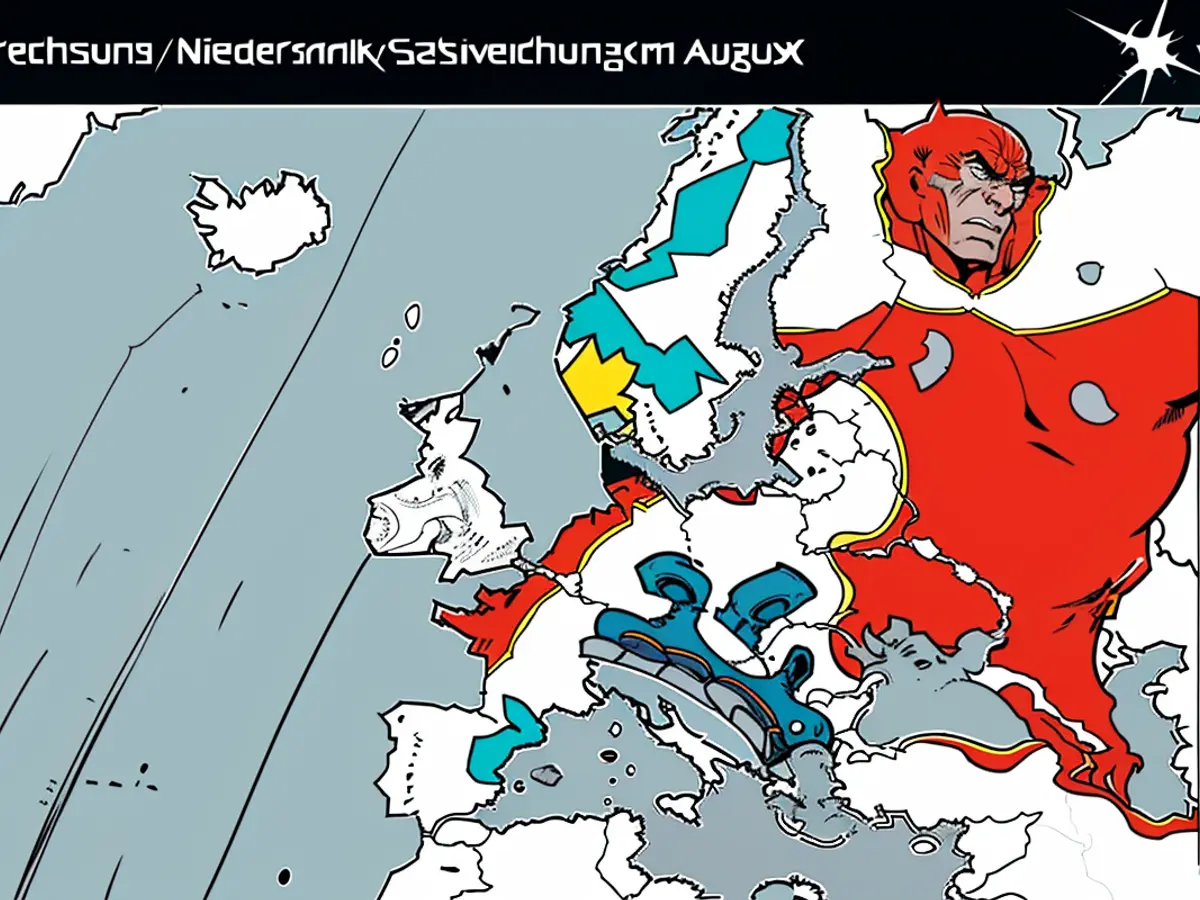Summer balances between storms and 40-degree heat
According to the groundhog's prediction, the further development of summer 2024 in Germany is now set in stone. Scorching, dry bathing weather is not an option. The long-term forecasts confirm the same. However, the holiday weather still looks good, despite the heat being elsewhere. Where has the heat gone?
The groundhog has given its prediction on the German summer 2024 and can go back to sleep. It does well if it is a heat and bathing type, as it looks like the upcoming weeks will not have a persistent summer high left, but rather the roller coaster course with moderate temperatures, short heat waves, thunderstorms, and heavy rain showers with a risk of hail and tornadoes will continue.
The significant difference from the weather during the groundhog's timeframe (June 27 to July 8) is the higher temperature level at which the strenuous, changeable weather occurs. This increases the risk of heavy rain, hail, and tornadoes, as warm air can absorb more moisture and therefore has more energy for tornadoes. These are ominous prospects, as Germany has had to deal with several weather systems in recent times.
According to weather.de's monthly forecast, July could end up being significantly rainier than expected. And the prospects for a dry and rather warm August in the experimental long-term models are also fading. The calculated average temperatures and precipitation indicate unstable weather and no sunny heat month. Heatwaves with temperatures over 30 degrees and even above that are possible, but would then be counteracted by temperature drops or reversals. Consistency is different.

Uncertainty in Central and Eastern Mediterranean
The uncertain summer weather here means that it is still very hot in the central and especially eastern Mediterranean, possibly even hotter, and hardly any rain falls. This sounds good for many holidaymakers. Currently, the heat is brewing from Eastern Austria over Hungary and the southern Balkan countries. The situation is still a bit uncertain in the weather models, but temperatures of 35 to 39 degrees are possible in Vienna, for example. Greece, Turkey, Southern Italy, and Southern Spain are also affected by the mega-heat.
An end to the very hot phase is not in sight. Similar to the previous year, a heatwave could form over wide parts of the Mediterranean up to the Black Sea. Rainfall is hardly in sight - if, then in the form of individual thunderstorms, which provide little relief regarding dryness. In addition, they can be triggered by lightning strikes, which can quickly spread into fires due to the persistent heat and drought.

In the end, Germany can be pleased with the many lows that bring rain and temporarily lower temperatures. These lows keep the extreme heat at bay.
The Seven Sleepers' Day is not named after the little hibernating hedgehog. Instead, its name derives from a legend about seven men. These men, persecuted for their Christian faith, are said to have taken refuge in a cave in Ephesus, Turkey around the year 251. After nearly 200 years of sleep, they were allegedly discovered alive. In Germany, their commemoration day is on the 27th of June. However, the original date has been shifted due to the Gregorian calendar reform in 1582, making the Seven Sleepers' Day actually fall on the 7th or 8th of July.
The meteorological analysis suggests that the extreme weather conditions, including heatwaves with temperatures over 30 degrees, are more likely to occur in the central and eastern Mediterranean, posing a significant risk of wildfires due to persistent heat and drought. On the contrary, Germany might experience a pattern of moderate temperatures, short heat waves, thunderstorms, and heavy rain showers with a risk of hail and tornadoes, as international meteorological reports indicate.







